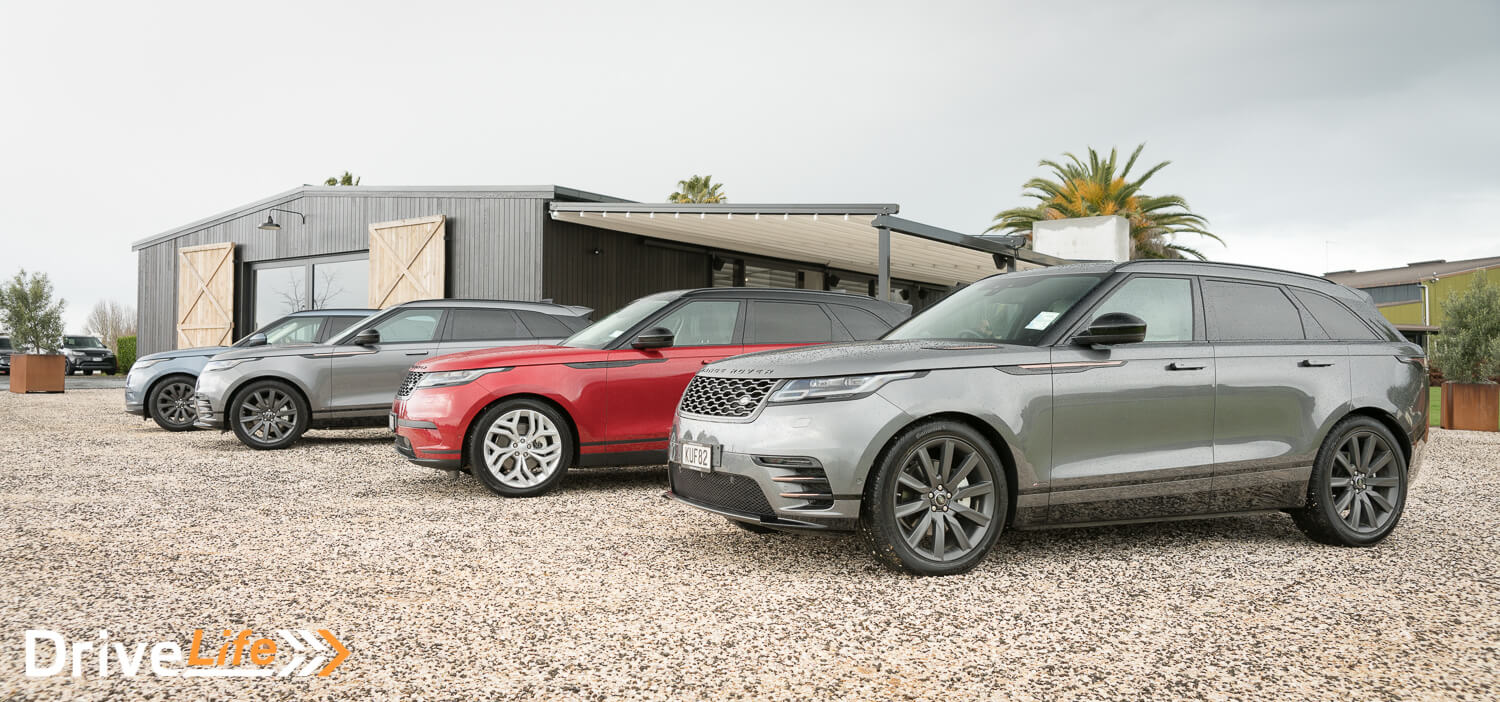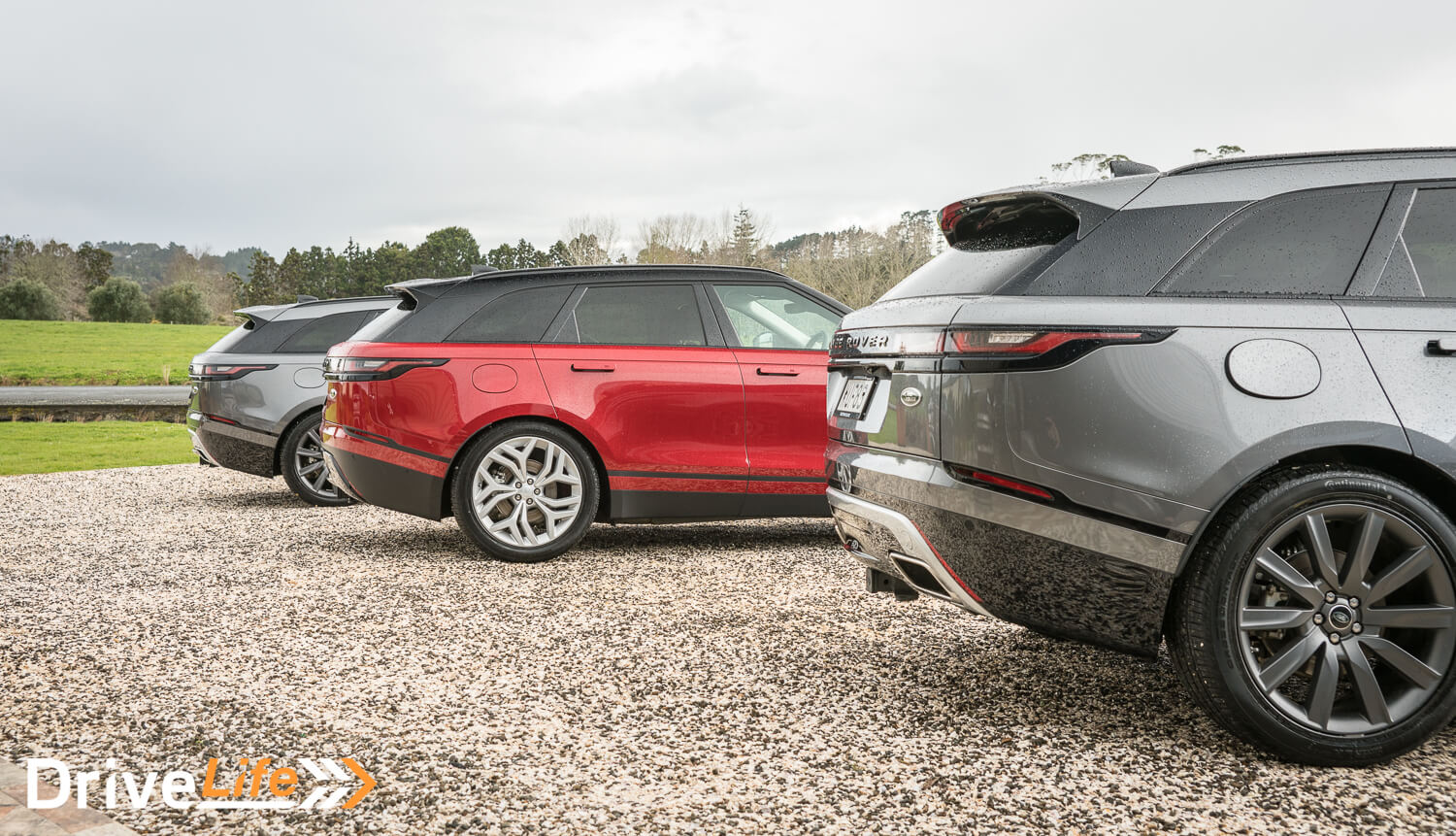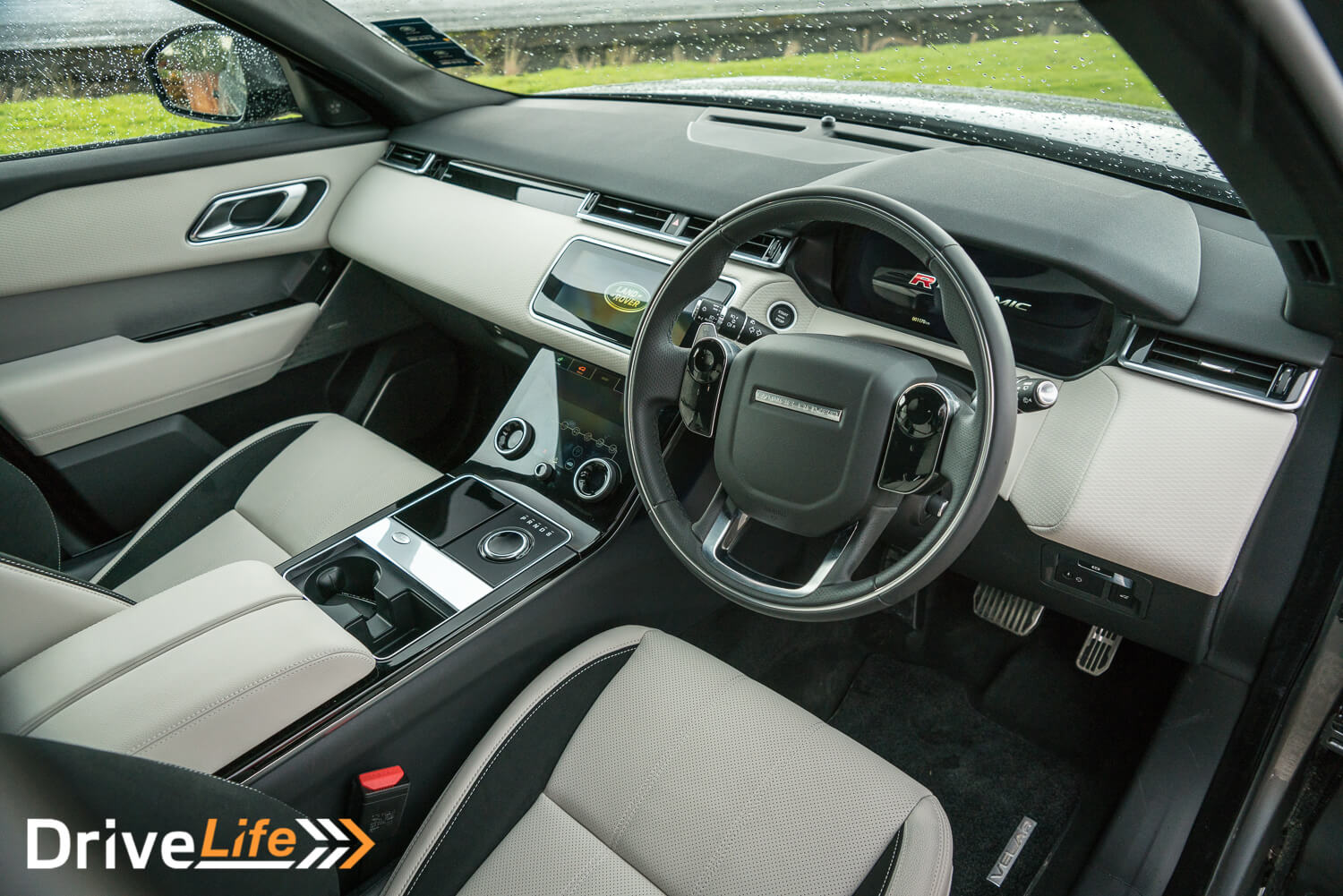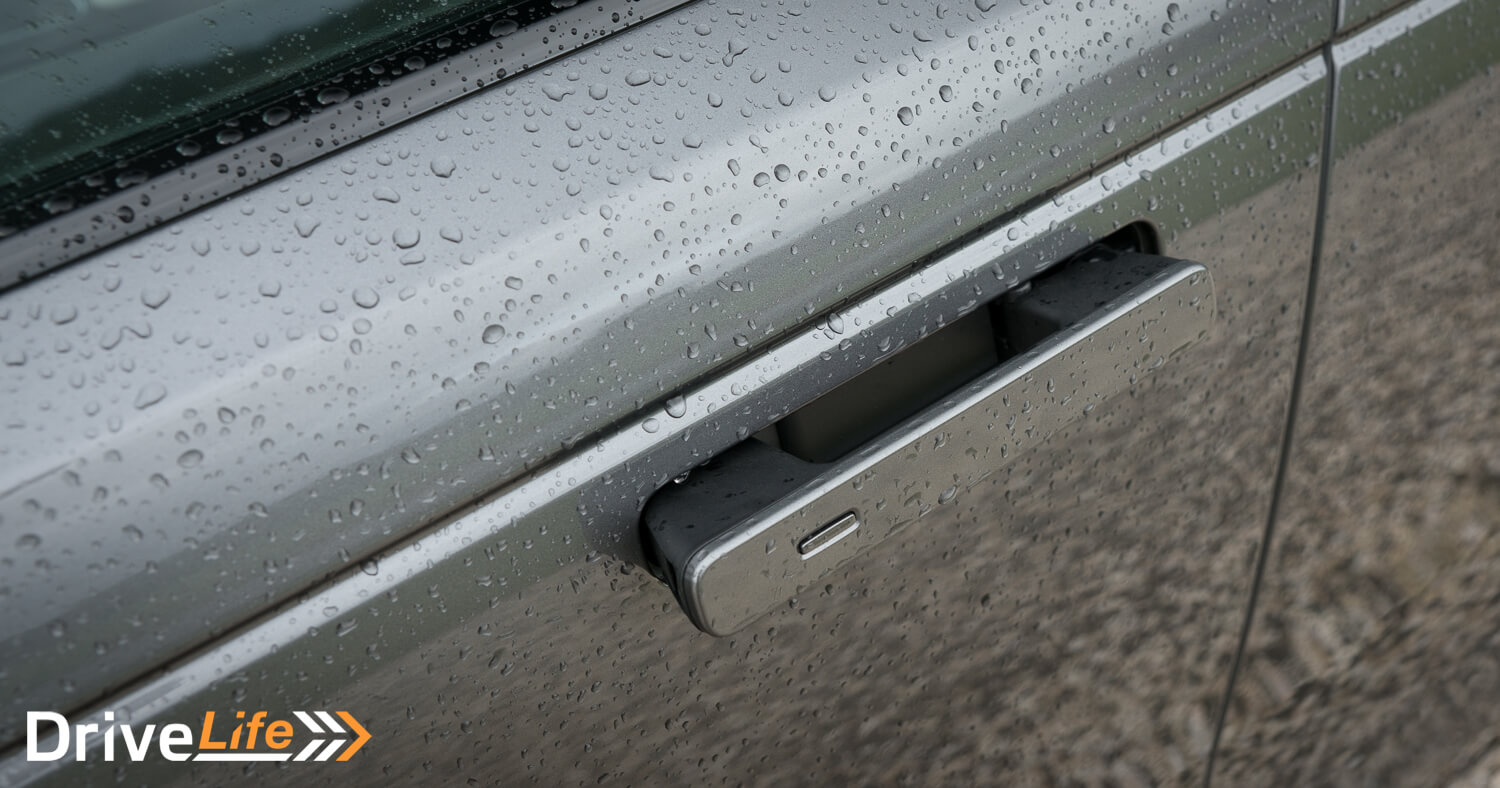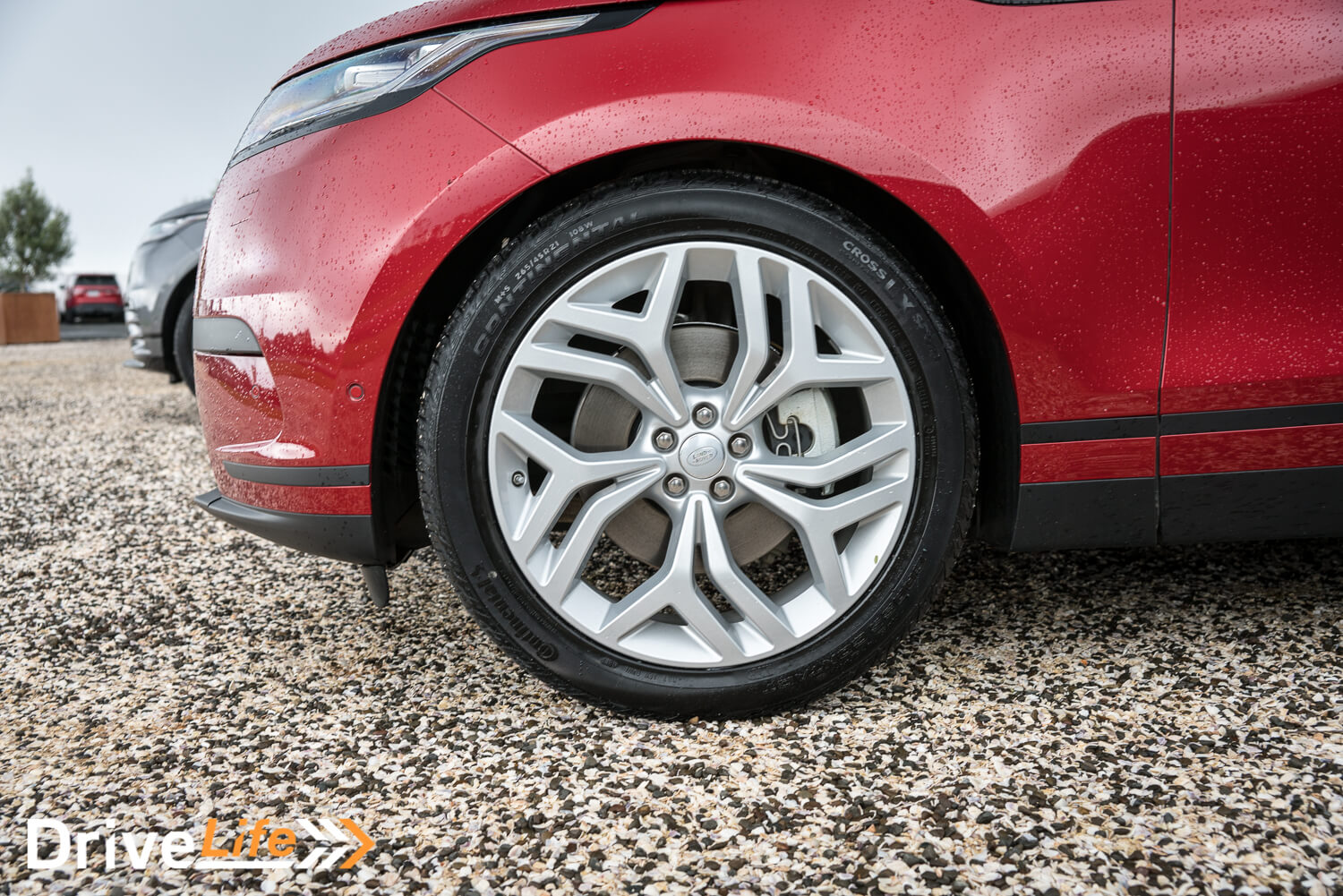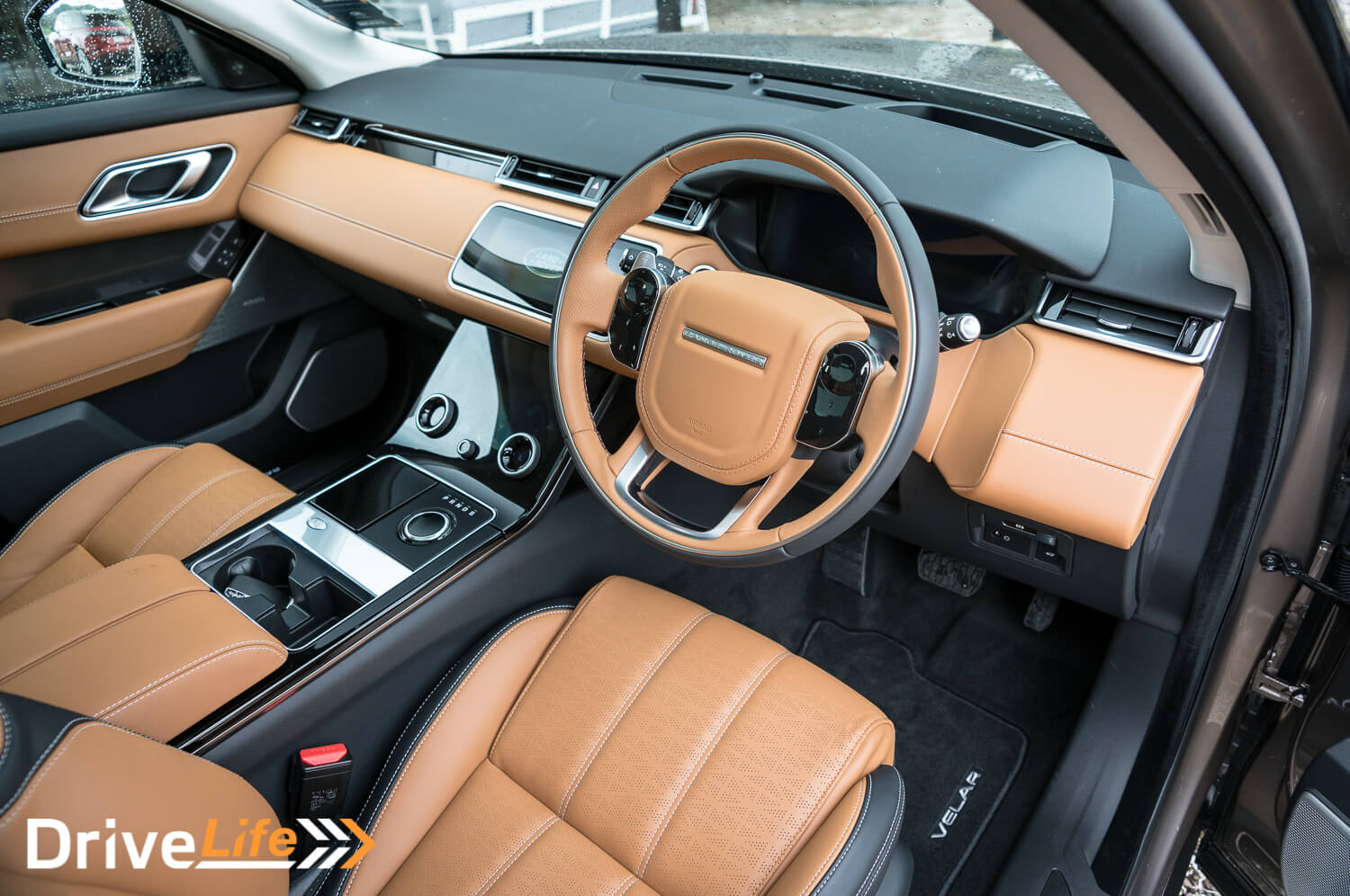Yesterday we were in Auckland for the New Zealand launch of the new Range Rover Velar, which was at The Hunting Lodge in Waimauku.
On arrival, we find that there are two Velars under covers, which only help to build our anticipation. Not long into the briefing, the covers are lifted and we see two R-Dynamic Velars. And my first impression was that they were not as big as I thought they were from the marketing. Not long after, it’s indicated that this product sits between the Range Rover Evoque and Sport, making more sense. Easy to confuse this as a replacement for the Sport.
On to the models available, first and easiest thing to work out: petrol or diesel. There is one 3.0L supercharged petrol, that produces 280 kw and 450 Nm of torque. The diesel engine is turbo, and creates 221 Kw and 700 Nm of Torque.
Now onto the three spec grades. S – the base model – starts at $134,900, SE from $141,900 and HSE from $152,900. And both the SE and HSE can be spec’d as R-Dynamic. For the SE this starts from $146,850 and for the HSE it starts at $157,850. It may seem like a lot already, but those were the easy options.
From here you have the 16 page brochure of options you can have. There are 4 roof options, 11 paint options, 4 design packs, 15 wheel options, 9 seat options, 8 interior color options, 3 additional luxury interior packs, 3 headlight options, 7 exterior feature options, 16 driver aid options, 15 more additional seating and interior trim options, 8 options for driver packs and 41 accessory options. It’s mind boggling how much customisation you can do this vehicle. And it would would not be hard to imagine the price climbing to well over $200k to get the model that’s right for you.
So what’s the Velar about? Well it’s the next evolution of Range Rover, pushing the limits of refinement and luxury to the next level. Right now, the Velar might seem close to the Sport, but the next update to the Sport will also come with a big jump, increasing the gap between these models.
Inside the Velar, you can instantly see where they are going; the level compared to previous Range Rovers, has been lifted to a clean and modern design. The most noticeable feature would be the main console, which looks to be a mass of piano black wood or plastic. However, once you start the car, you can see that this mass has touch screens built into it that light up from underneath.
Above this, you have a 12-inch wide screen, that tilts out for easy viewing when the car is on. Both of these screens have amazing clarity, and a huge selection of options, allowing you to control almost every aspect of the vehicle. Even the steering wheel has touch screen style buttons that change as you use them with different features. All of which can be see in this quick video we posted on the day on Facebook.
I could talk about the all the options and specs and toys for days in this vehicles. The brochure alone is 88 pages long. However we will be doing an in-depth review soon, so there is no point in doubling up.
We did get a demo of the Land Rover In Control Remote App, which is not that dissimilar to the BMW display key. Unlike the display key, this app is a lot more future proof, as it will get updates as development progresses. This app can show you where the vehicle is, beep and flash lights if you’re unable to find it in a carpark, and display a range of other vehicle information.
I will quickly chat about how they drove, in the short time we had them both on and off the road. We found it hard to tell the models apart, the normal body shape and the R-Design are easy to notice, however the S, SE and HSE are only visible by a small badge on the rear of the boot. On all models, the door handles pop out, making the overall design very sleek. How cool is that?
So as we jumped from one Velar to the next, we never really knew what to expect. I started out in the Diesel SE, and was surprised to find its sounds very un-diesel like. The low-end torque was there, but it had a nice, almost V6 petrol engine sound. The ride was firm, even in normal mode, which ever so slightly stiffened in sports mode. And to me, this was the only noticeable change to the vehicle when in sport/dynamic mode, as you already have 700 Nm of torque at hand.
The roads were large stone tarseal, which left us with a bit of cabin noise – more than I expected – but this was probably due to the poor makeup of the road, and how quiet the cabin was in general. Steering is light, and the Velar drives more like a car then an SUV. After 30km behind the wheel we had a driver change, and after another 30km, we had a vehicle change.
From here, we jumped into the petrol HSE model. Once in, you quickly notice the spec change. The seats were so much better in the HSE, almost couch like, very supportive while being fluffy. I know, makes no sense what so ever, but they were great. They were also the 20-way adjustable, heated, cooled and massaging spec seats. And having a heated massage while driving is something I need to figure out how to get in my own car.
The other noticeable difference was the massive drop in torque from the diesel, and the power range seemed to be high in the revs. Most of the time driving the petrol, it revved higher then you would expect a 3.0L supercharged engine to. The upside of this was that when you switched to sports mode, it really changed how it felt. Now with a jab of the throttle, the Velar lurched forward and could hit 100km in just 6 seconds. This was half a second faster than the diesel model. After some more driving, we got back to The Hunting Lodge for lunch.
After a short lunch, we set off into the Woodhill forest. In here we were taken through the Land Rover Discovery Experience track. There was nothing too extreme for us in here, once we had flicked over to Grass/Gravel/Snow mode, and raise the self-leveling air suspension into its highest position, we set off.
Right away we could feel the Active Locking Rear Differential working. We could see it too, on the main screens. You could also see the travel distance for each wheel, the angle of the vehicle or a large compass. Traversing the Discovery Experience track seemed to be a doddle, which in itself shows how impressive the Velar handles itself off-road.
During this, we came across a Discovery-spec alternating ramp, which we were told to take the Velar over. You can also see this quick video we posted on the day on Facebook. After 45mins roaming around the Woodhill forest, it was clear that the Velar is not a supermarket shopping cart, it’s a serious bit of kit, that lives up the brand’s pedigree.
At the end of the day, based on the small amount of time we had in the different models, I thought the diesel engine was the one to pick, and if you can the HSE spec. From there, it seems like you can do what you want, but to me, that was the best combination of the day’s events.
These launch days are a short taste, and that’s what we got. So keep an eye out for the full in-depth review of the new Range Rover Velar coming soon.



